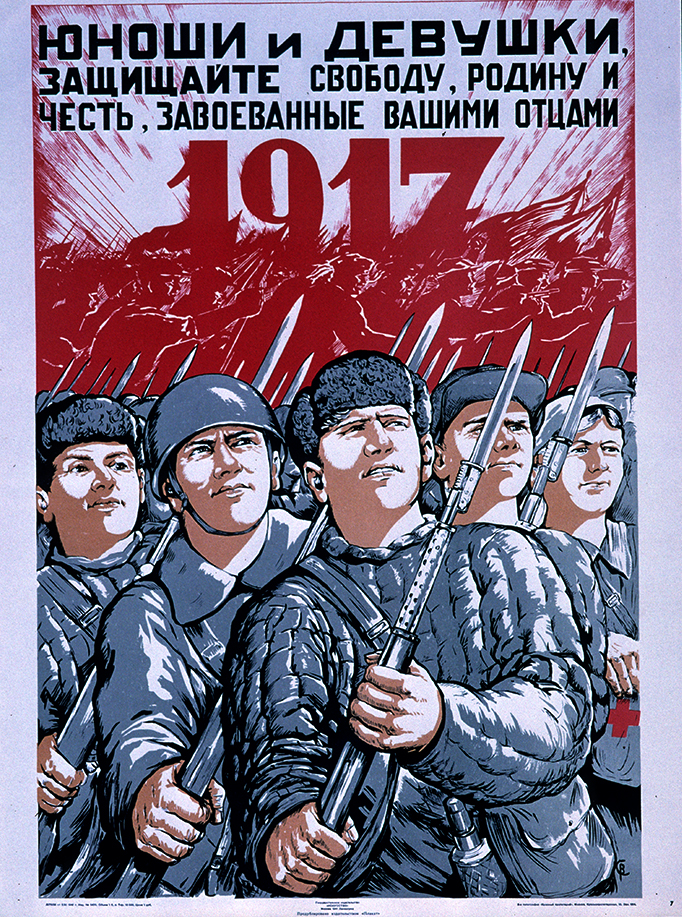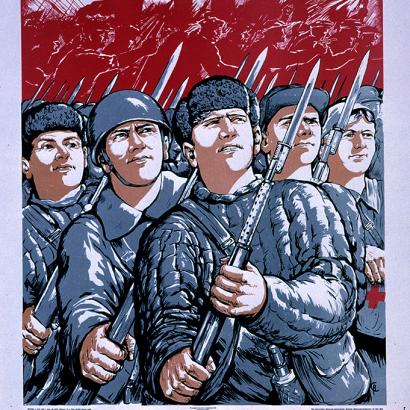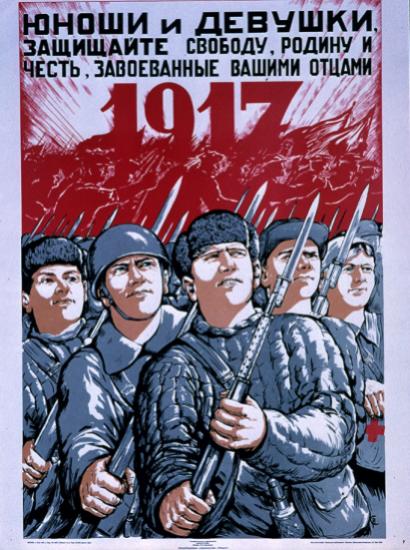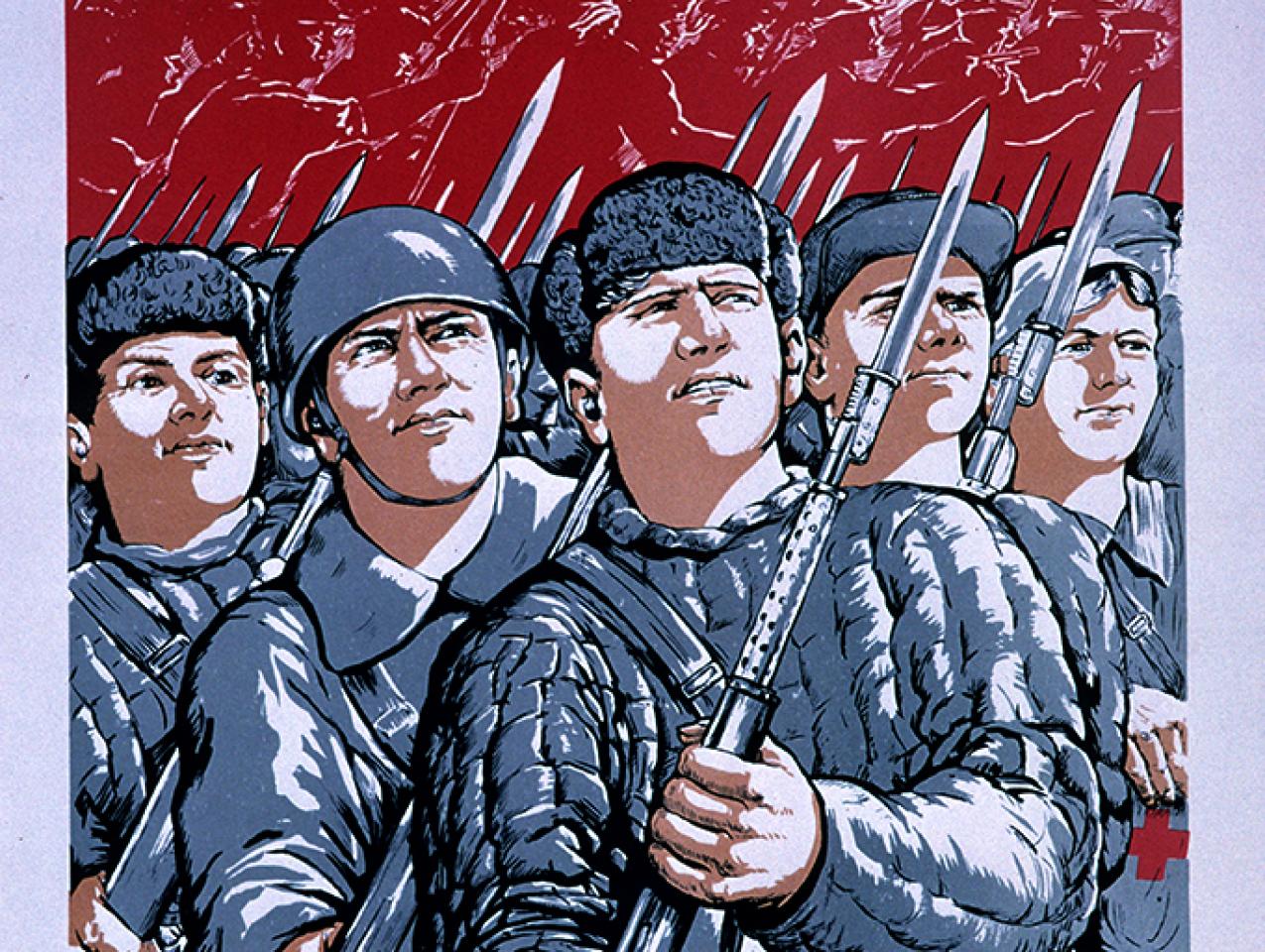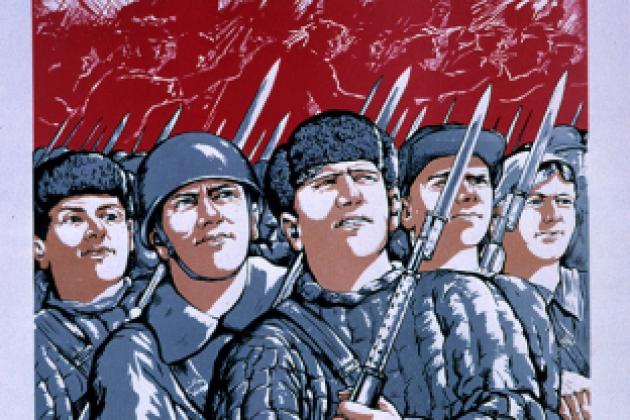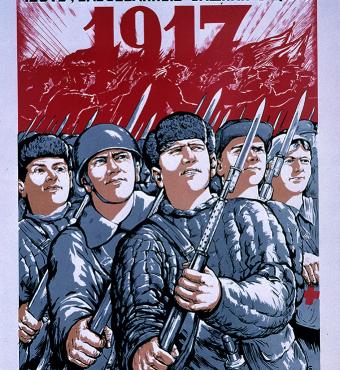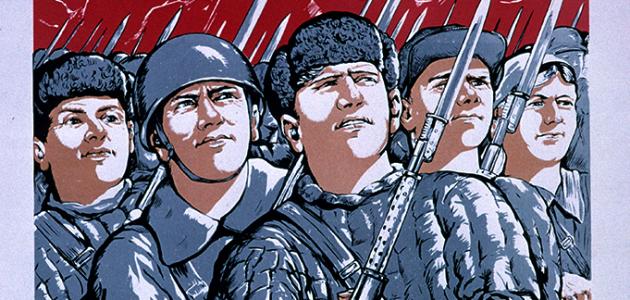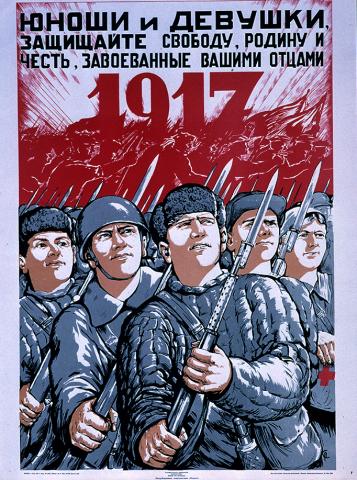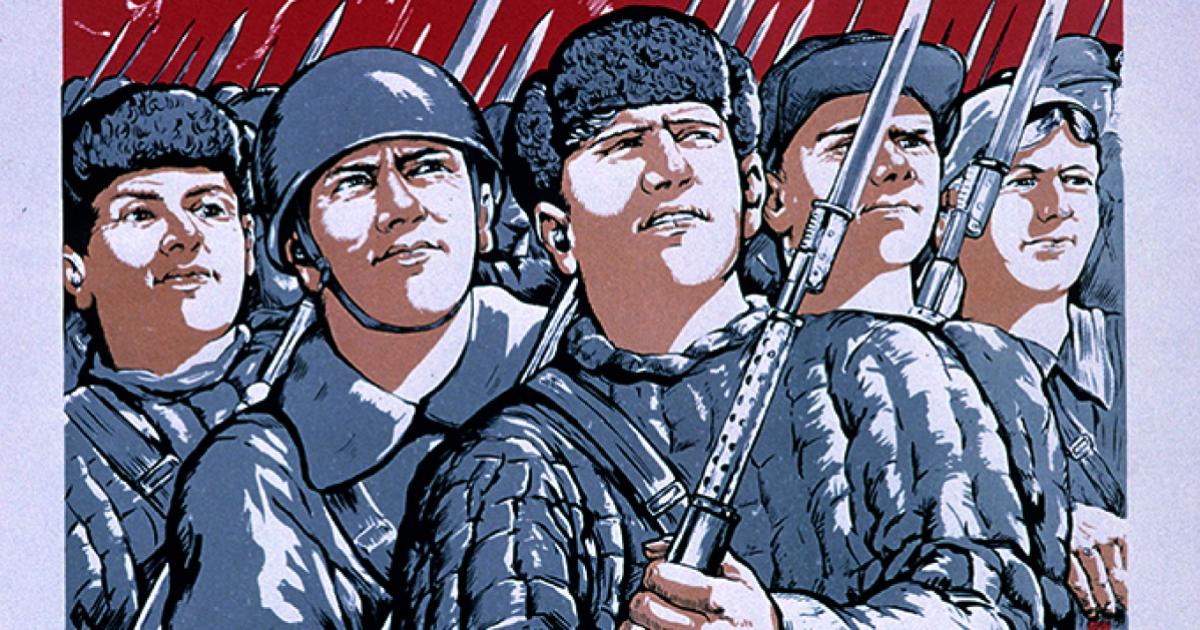- History
- Military
Russia, as with all nations, cannot escape its history, geography, and demography. These three factors have influenced its way of war from its earliest days. Russia has fought scores of conflicts in the past millennium, and since 1700 the great Bear battled four major invasions (the Great Northern War, the Napoleonic Wars, World War I, and World War II), in the end winning three of them convincingly. The Poltava campaign in 1709 left the Swedish army in ruins; Napoleon’s invasion of Russia in 1812 ended with Tsar Alexander I’s army in Paris; and the German invasion of the Soviet Union (of which Russia formed the major part) in 1941 ended with the Red Army in Berlin. Only the First World War resulted in outright defeat, and that was due to an internal revolution which overthrew the existing regime and brought Vladimir Lenin’s communists to power.
Russia has used its geographic depth, forbidding climate, and large population to overcome its most existential adversaries. Peter the Great lost a major battle at Narva in 1700, only to modernize his army and decisively defeat Swedish forces under Charles XII, already suffering from one of the most severe winters in Russian history, at Poltava nine years later. Tsar Alexander I and his battlefield commander, Mikhail Kutuzov, likewise traded space for time as Napoleon’s stronger Grande Armée attacked into the depths of Russia in the summer of 1812. Sickness and desertion plagued Napoleon’s army, as well as the inability to haul sufficient supplies to keep the soldiers fed. By the Battle of Borodino on September 7, the initially inferior Russian forces outnumbered their adversaries. Although Napoleon won the battle, he lost a third of his remaining forces in the process. The Russian Army lost even more, but Kutuzov could replace his casualties as he was fighting on home ground. He then ceded the capital city of Moscow to Napoleon and the Grande Armée, which waited for an offer to negotiate a truce that never came. Faced with the oncoming Russian winter and with Moscow in ashes, Napoleon retreated, losing most of his remaining army on the way back to the border.
For the Russian Army, World War I began inauspiciously with an ill-fated invasion of East Prussia that ended with a disastrous defeat at Tannenberg. The Russian Army, massive but ill-armed, trained, and supplied, fought for several years before cumulative losses led to mutiny at the front and revolution at home. The only bright spot had been the Brusilov Offensive in eastern Galicia in the summer of 1916, which decimated the Austro-Hungarian Army, convinced Romania to join the Entente Powers, and forced the German Army to relax its death grip on Verdun. The commander of the Russian forces in this offensive, General Aleksei Brusilov, used his artillery so skillfully that his German opposite number, Colonel Georg Bruchmüller, would adopt similar techniques when planning the German Spring Offensive on the Western Front in 1918. Indirect firepower has been a strength of the Russian way of war ever since.
World War II began quite differently for the Red Army, with an unexpected German invasion that by the end of the year had killed or wounded a million soldiers, with another three million languishing in German POW camps. (Most of them would end up dead, too.) But once again, the depths of Mother Russia, the brutal climate, and a seemingly inexhaustible supply of manpower saved the nation from defeat. The Soviet state called up its reserve forces, transferred the Siberian Army led by General Georgy Zhukov to the west, and mobilized the nation for war. Zhukov’s legions defeated the German army in front of Moscow, and tens of thousands of Germans froze to death in the ensuing brutal winter.
After another blow in the summer and fall of 1942 left German forces arrayed along the Volga River and deep in the Caucasus, the Red Army counterattacked, surrounding the German Sixth Army at Stalingrad. From that point until the end of the war in May 1945, the Red Army showcased its way of war: Deep battle made possible by enormous armored juggernauts (supplied by tens of thousands of American-made trucks), defensive lines dozens of miles deep seeded with millions of mines, and massive amounts of artillery and rockets that overwhelmed attacking enemy forces and made possible penetrations of static defensive positions, all supported by excellent battlefield intelligence and maskirovka (deception) operations. The Red Army defeated the German summer 1943 offensive at Kursk, destroyed Army Group Center in 1944, and crushed final resistance in Berlin in April and May 1945. (Stalin, when asked if he was satisfied with the outcome, replied sardonically, “Tsar Alexander made it all the way to Paris.”)
Russia’s invasion of Ukraine last year initiated its first major conventional war since then, and it has proven that the Russian military of today is a pale shadow of its former self. Outnumbered Ukrainian forces halted Russian armored columns short of Kyiv and then forced them to retreat. The Ukrainians, taking a page from the Russian maskirovka playbook, deceived their opponents time and again, leading to successful counteroffensives near Kharkiv and Kherson. The firepower equation has proven roughly equal, with Ukrainian use of precision munitions (provided by the West) making up for its lack of numbers. The Russian Army has proven more capable in defense lately, creating defensive lines that mirror those that stymied the Wehrmacht in the Battle of Kursk in July 1943. Whether it will win remains debatable, as two of the three systemic factors that have enabled Russian victories in the past (geography and climate) no longer favor Russian forces, and the third factor (a more numerous population) might not provide the advantage that it once did, absent an industrial base that can provide the weapons and munitions required to sustain large numbers of forces at the front.
But don’t count the Russians out just yet, for they time and again have proven their ability to suffer and survive. Undoubtedly, those two qualities are also part of the Russian way of war.







